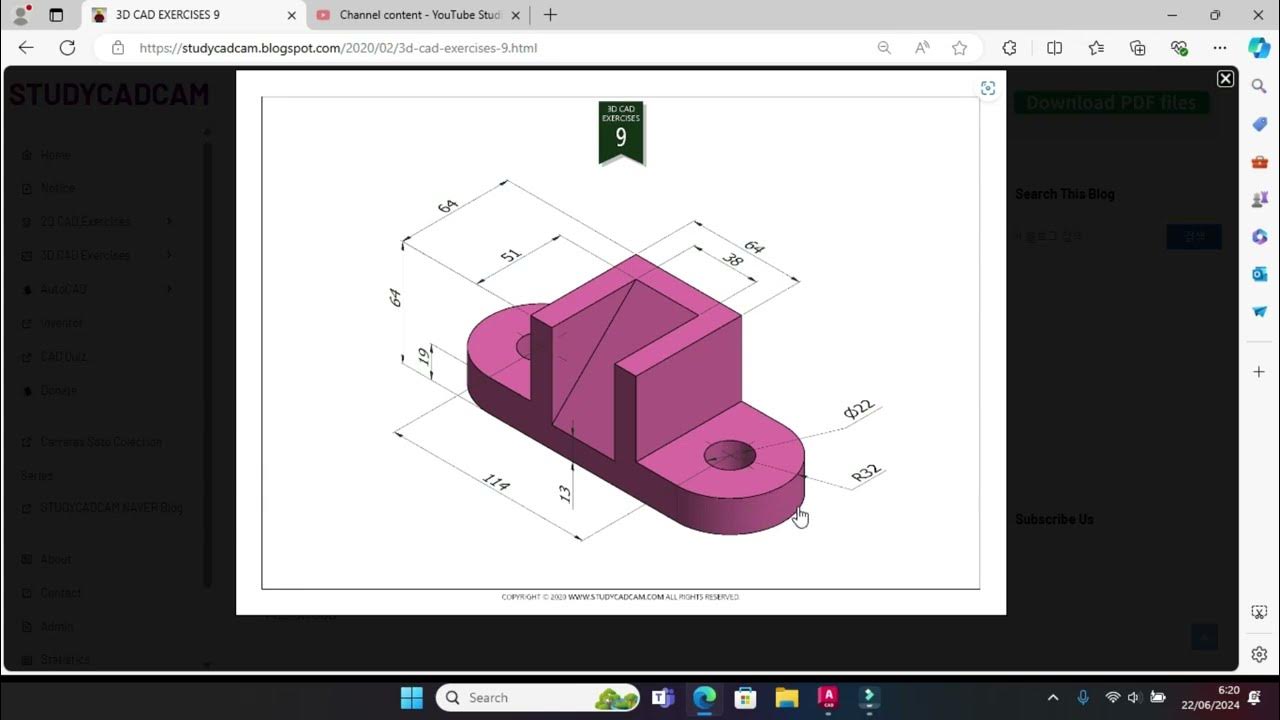HOW TO DRAW ANYTHING (No clickbait) | Drawlikeasir
Summary
TLDRIn this engaging tutorial, Marcel guides aspiring artists through the fundamental technique of breaking down any subject into basic shapes to master drawing. He emphasizes the importance of practicing simple shapes like circles and cubes to build a strong foundation, and encourages viewers to challenge themselves with 3D perspectives and complex structures. Marcel also shares his journey of creating an artbook, teases potential English translations of his manga series, and reminds viewers of the value of references even for professionals.
Takeaways
- 🎨 Marcel's video aims to teach viewers how to draw everything using basic shapes and shapes' evolution.
- 📚 The importance of mastering simple shapes like circles and squares is emphasized for drawing anything, including complex subjects.
- 🚶♂️ Marcel compares learning to draw simple shapes to learning to walk before running, suggesting it's a foundational step to drawing more complex subjects.
- 🤔 The video addresses the common issue of struggling with basic shapes, like circles, which are crucial for drawing faces and other objects.
- 📈 Marcel encourages viewers to practice drawing in 3D and with perspective to enhance the liveliness of their drawings.
- 📝 He suggests using a sketchbook or simple paper and pen for practice, emphasizing that expensive supplies are not necessary.
- 🔢 Quantity of practice is highlighted as important, with the hundredth attempt expected to be significantly better than the first.
- 🤹♂️ Marcel challenges viewers to evolve their shapes, such as elongating circles to draw 'beans', which are used in drawing human bodies.
- 🔍 The video mentions the use of references as a common practice among professionals, debunking the myth that they don't use them.
- 🗺️ Marcel outlines a three-step roadmap for drawing: breaking down subjects into basic shapes, learning anatomy or structure, and then drawing from imagination with references.
- 📖 The video concludes with Marcel discussing his upcoming artbook, which will contain unpublished drawings and favorite artworks.
Q & A
What is the main theme of Marcel's video?
-The main theme of Marcel's video is teaching viewers how to draw everything, including animals, humans, and inanimate objects, by breaking them down into simple shapes.
What does Marcel emphasize as the first step in learning to draw?
-Marcel emphasizes that the first step in learning to draw is mastering the most basic shapes, such as circles and cubes, which are fundamental to drawing anything.
Why does Marcel suggest that learning to draw simple shapes is like learning to walk before running?
-Marcel suggests that learning to draw simple shapes is like learning to walk before running because it builds a strong foundation, making it easier to progress to more complex drawings.
What does Marcel recommend for those who are just starting to draw?
-Marcel recommends starting with simple shapes and practicing in quantity, using inexpensive materials like a sketchbook or a sheet of paper and a pen, to track progress and gain experience.
How does Marcel suggest improving one's drawing skills beyond simple shapes?
-Marcel suggests challenging oneself by drawing shapes in 3D, experimenting with perspective, and combining multiple shapes to interact together, which helps in learning how to draw more complex objects.
What is Marcel's advice on the importance of using references while drawing?
-Marcel advises that even professionals use references, and there is no shame in it. He suggests using references to understand how a subject looks from different angles, especially when learning.
What does Marcel propose as a three-step roadmap for drawing anything?
-Marcel's three-step roadmap involves breaking down the subject into basic shapes, learning the anatomy or structure of the subject, and then applying this knowledge to draw the object from any perspective or angle.
What is Marcel's perspective on the use of geometrical shapes by professional artists?
-Marcel states that even after decades of drawing, many professional artists still use geometrical shapes as a legitimate way of learning and improving their drawing skills.
What is Marcel's first artbook about, and what can viewers expect from it?
-Marcel's first artbook contains 150 pages of his favorite manga pages, artworks, character sheets, concept art, and unpublished drawings, showcasing his work throughout the year.
Does Marcel have plans to translate his manga series into English?
-Marcel has been considering translating his manga series into English, starting with volume 1, and will likely announce any updates on his social media platforms.
How can viewers support Marcel's work and stay updated on his projects?
-Viewers can support Marcel by subscribing to his channel, liking his videos, leaving comments, and following him on social media for updates on his artbook and potential English translations of his manga series.
Outlines

This section is available to paid users only. Please upgrade to access this part.
Upgrade NowMindmap

This section is available to paid users only. Please upgrade to access this part.
Upgrade NowKeywords

This section is available to paid users only. Please upgrade to access this part.
Upgrade NowHighlights

This section is available to paid users only. Please upgrade to access this part.
Upgrade NowTranscripts

This section is available to paid users only. Please upgrade to access this part.
Upgrade NowBrowse More Related Video

How to draw Hands in 10 Minutes | Tutorial | Drawlikeasir

Learn How to Draw for Beginners - Episode 1

Most common DRAWING MISTAKES (and how to solve them) | DrawlikeaSir

How to Start Drawing Digitally | DrawlikeaSir

Tutorial Autocad 3D II Studycadcam Exercise 9

GCSE Maths - How to find the Area of Compound Shapes #106
5.0 / 5 (0 votes)